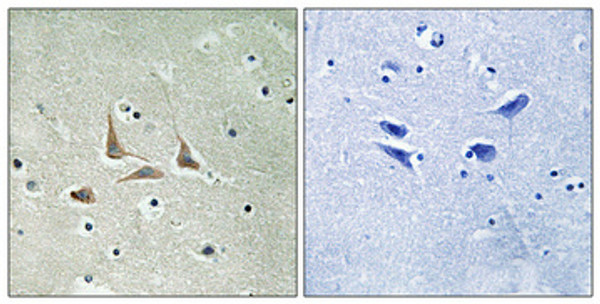| Post Translational Modifications | May be phosphorylated by CDK5. Ubiquitinated. Probably triggers proteasomal degradation and is negatively regulated by UFL1. May be ufmylated. Cleaved by caspases early during apoptosis, the resulting peptides may play a role in rupture of the nuclear envelope. |
| Function | Substrate adapter of E3 ligase complexes mediating ufmylation, the covalent attachment of the ubiquitin-like modifier UFM1 to substrate proteins, and which is involved in various processes, such as ribosome recycling and reticulophagy (also called ER-phagy). As part of the UREL complex, plays a key role in ribosome recycling by promoting mono-ufmylation of RPL26/uL24 subunit of the 60S ribosome. Ufmylation of RPL26/uL24 occurs on free 60S ribosomes following ribosome dissociation: it weakens the junction between post-termination 60S subunits and SEC61 translocons, promoting release and recycling of the large ribosomal subunit from the endoplasmic reticulum membrane. Ufmylation of RPL26/uL24 and subsequent 60S ribosome recycling either take place after normal termination of translation or after ribosome stalling during cotranslational translocation at the endoplasmic reticulum. Within the UREL complex, CDK5RAP3 acts as a substrate adapter that constrains UFL1 ligase activity to mono-ufmylate RPL26/uL24 at 'Lys-134'. The UREL complex is also involved in reticulophagy in response to endoplasmic reticulum stress by promoting ufmylation of proteins such as CYB5R3, thereby promoting lysosomal degradation of ufmylated proteins. Also acts as a regulator of transcription: negatively regulates NF-kappa-B-mediated gene transcription through the control of RELA phosphorylation. Also regulates mitotic G2/M transition checkpoint and mitotic G2 DNA damage checkpoint. Through its interaction with CDKN2A/ARF and MDM2 may induce MDM2-dependent p53/TP53 ubiquitination, stabilization and activation in the nucleus, thereby promoting G1 cell cycle arrest and inhibition of cell proliferation. May also play a role in the rupture of the nuclear envelope during apoptosis. May regulate MAPK14 activity by regulating its dephosphorylation by PPM1D/WIP1. Required for liver development. (Microbial infection) May be negatively regulated by hepatitis B virus large envelope protein mutant pre-s2 to promote mitotic entry. |
| Protein Name | Cdk5 Regulatory Subunit-Associated Protein 3Cdk5 Activator-Binding Protein C53Lxxll/Leucine-Zipper-Containing Arf-Binding ProteinProtein Hsf-27 |
| Database Links | |
| Cellular Localisation | Endoplasmic Reticulum MembraneCytoplasmNucleusCytoskeletonMicrotubule Organizing CenterCentrosomeTethered To The Endoplasmic Reticulum Membrane As Part Of The Ufm1 Ribosome E3 Ligase (Urel) ComplexColocalizes And Associates With Microtubules |
| Alternative Antibody Names | Anti-Cdk5 Regulatory Subunit-Associated Protein 3 antibodyAnti-Cdk5 Activator-Binding Protein C53 antibodyAnti-Lxxll/Leucine-Zipper-Containing Arf-Binding Protein antibodyAnti-Protein Hsf-27 antibodyAnti-CDK5RAP3 antibodyAnti-IC53 antibodyAnti-LZAP antibodyAnti-MSTP016 antibodyAnti-OK antibodyAnti-SW-cl.114 antibodyAnti-PP1553 antibody |
Information sourced from Uniprot.org











